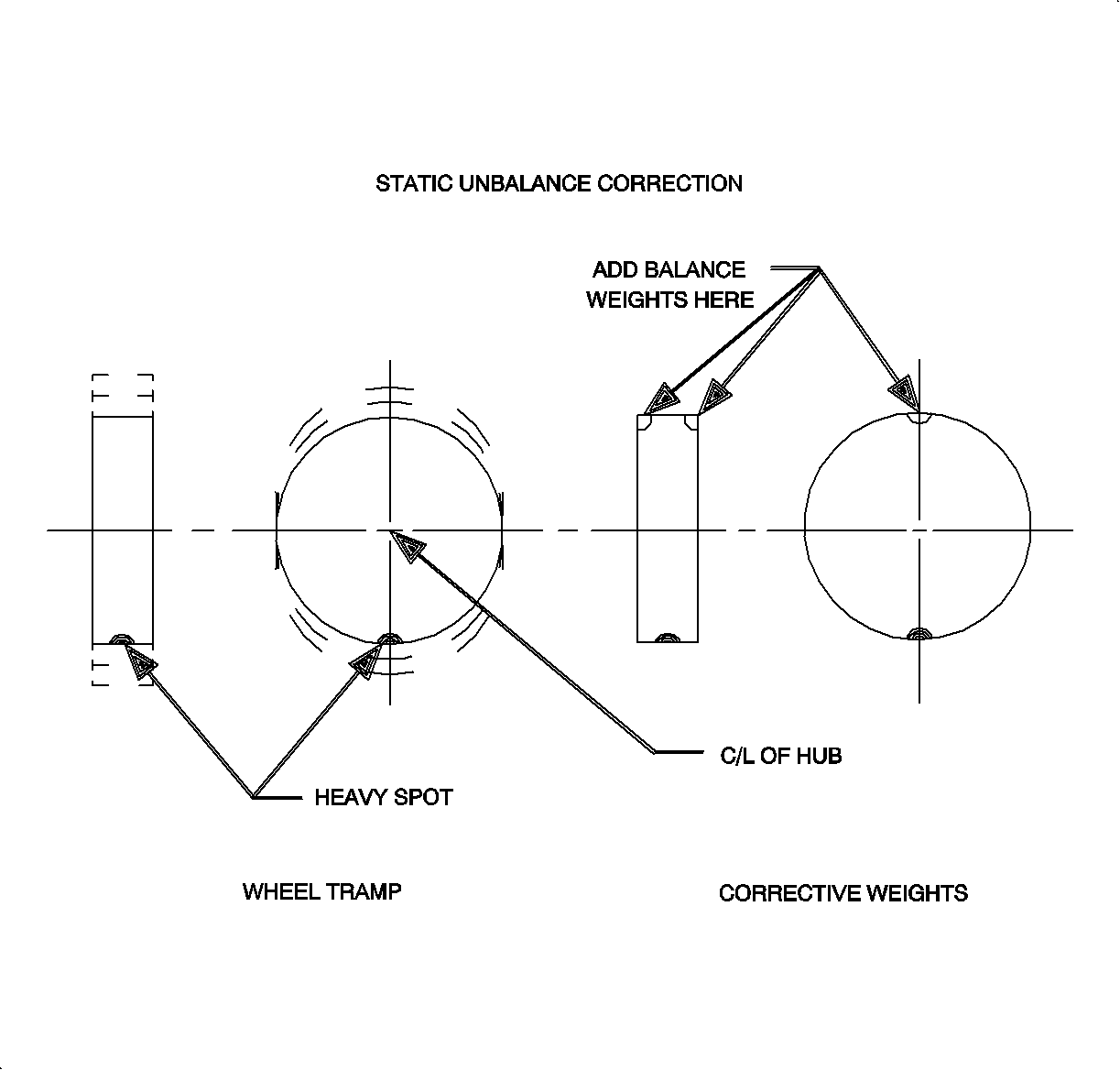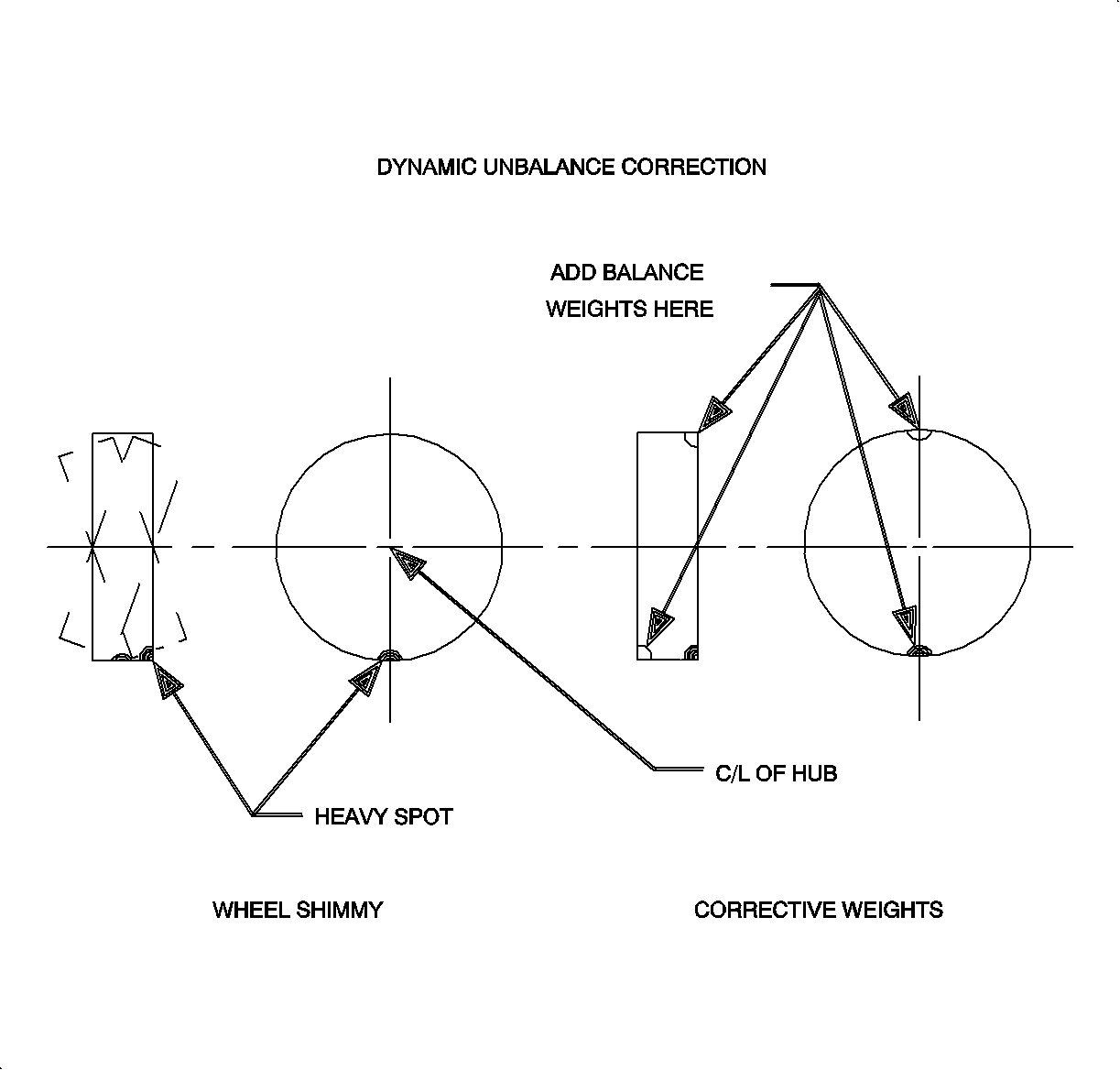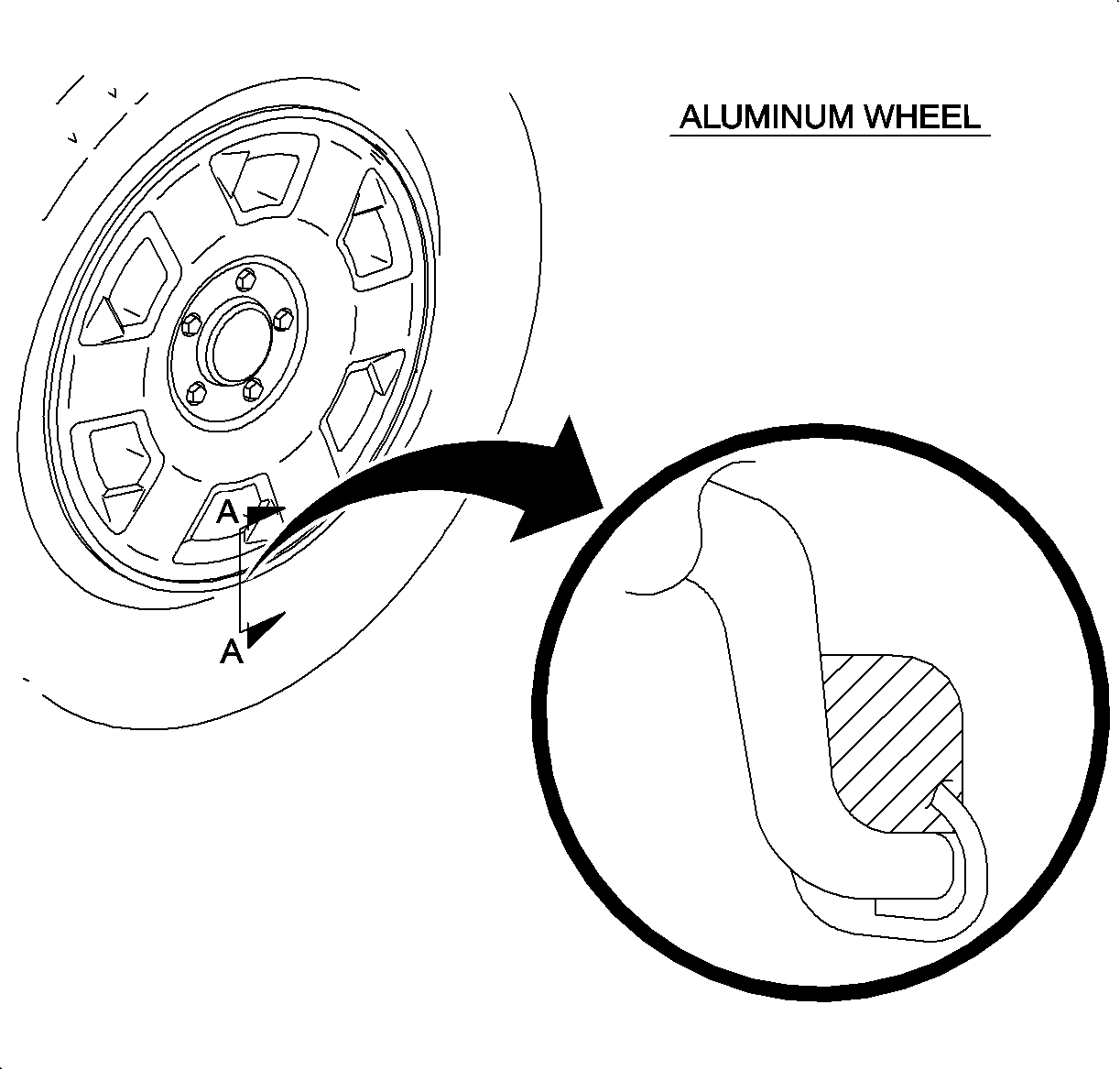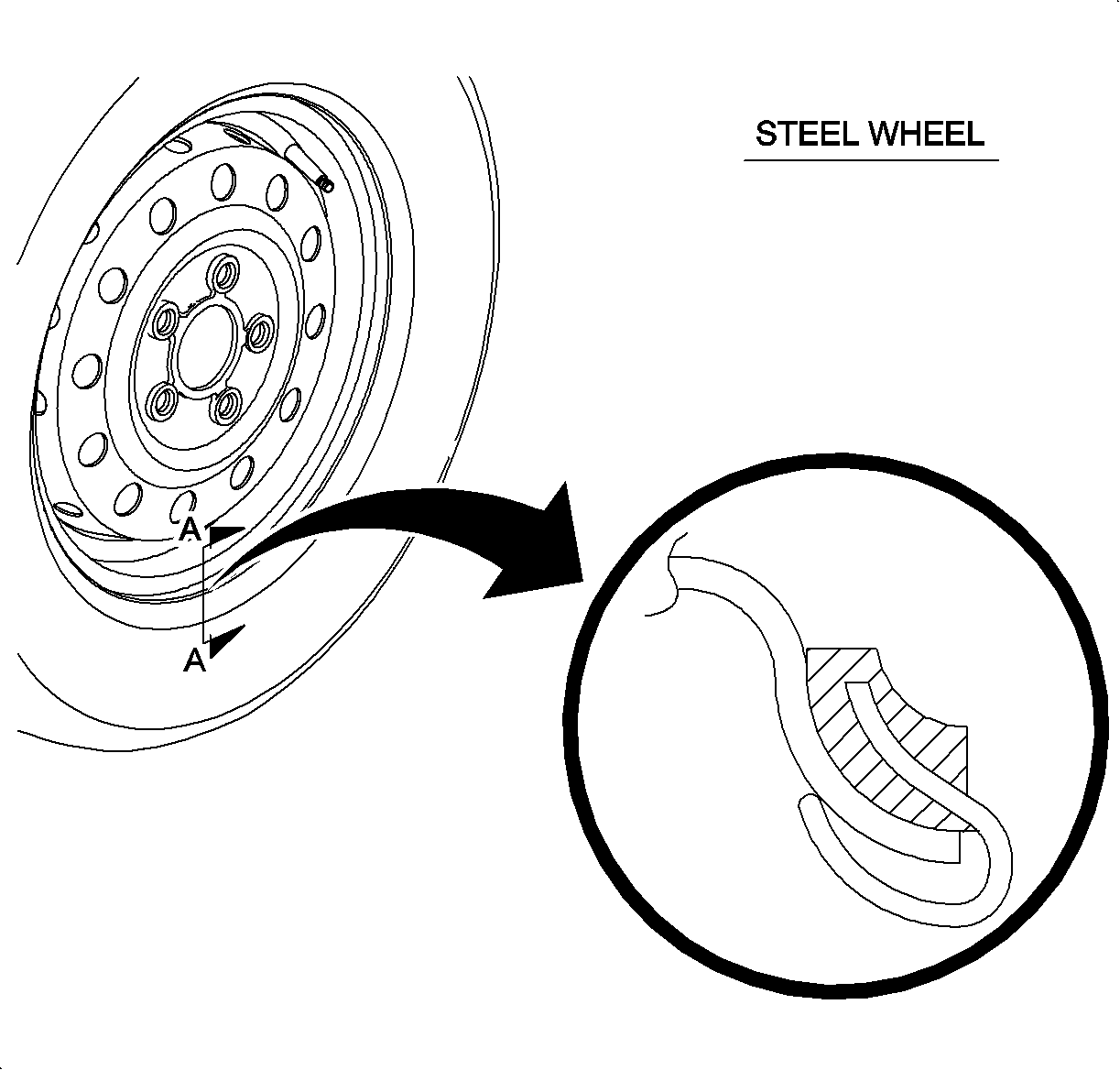General Information

Imbalanced tires can cause premature wear and increased stress on all steering and suspension parts.
There are 2 types of wheel and tire balancing: static balancing and dynamic balancing.
Static balancing ensures an equal distribution of weight around the wheel/tire. Assemblies that are statically unbalanced cause a bouncing action called tramp. This condition may cause vibration on smooth roads at highway speeds resulting in decreased riding comfort to the driver and passengers. In severe conditions, excessive static imbalance can also decrease traction due to loss of tire-to-road contact. Statically imbalanced tires can develop a cupping wear condition if the imbalance is not corrected.

Dynamic balancing ensures equal distribution of weight on each side of the wheel centerline, preventing the wheel from shaking from side-to-side and exhibiting a condition known as shimmy.
The 2 common methods of wheel balancing are off-vehicle balancing and on-vehicle balancing, sometimes referred to as finish balancing.
Off-vehicle balancing provides static and dynamic balancing and is more commonly used than the on-vehicle method.
On-vehicle balancing also provides static balancing and is sometimes helpful in stubborn cases where the wheels, brake rotors and drums, and/or hubs need to be balanced as a unit.
On-vehicle balancing is also known as finish balancing since the wheel and tire assemblies are balanced with an off-vehicle balancer prior to implementing the on-vehicle balancing method. This finish balancing method compensates for any imbalance conditions of rotating parts, such as brake rotors or wheel hubs. Be sure to evaluate wheel bearing condition and hub lateral runout prior to attempting any finish balancing procedures.
General Procedures

Wheel balancing methods vary according to the equipment manufacturer's specifications. The following tips are only general information, and they are not intended to replace the procedures recommended by the equipment manufacturer.
Deposits of mud, dirt, etc. must be cleaned from the inside of the rim.
Use coated type MC weights when balancing aluminum wheels.

Use uncoated type C weights when balancing steel wheels.
